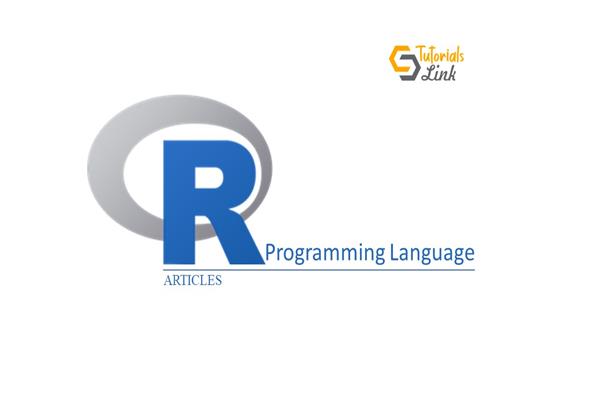What are the Operators in R programming Language?
What are the Operators in the R programming language?
OPERATORS:
An operator is used to perform mathematical and logical operations on operands. R has all types of in-built operators that are available in other languages.
The different types of Operators in R Language:
- Assignment Operator
- Logical Operator
- Relational Operator
- Arithmetic Operator
- Miscellaneous Operator
Assignment Operator
Two operators fall under assignment operator:
1) Called Left Assignment (< -, =, << -)
Example:
vector1 <- c(8,4,TRUE,5+3i)
vector2 <<- c(8,4,TRUE,5+3i)
vector3 = c(8,4,TRUE,5+3i)
print(vector1)
print(vector2)
print(vector3)OUTPUT
[1] 8+0i 4+0i 1+0i 5+3i
[1] 8+0i 4+0i 1+0i 5+3i
[1] 8+0i 4+0i 1+0i 5+3i2) Called Right Assignment(- >, - >>)
Example:
c(8,4,TRUE,5+3i) -> vector1
c(8,4,TRUE,5+3i) ->> vector2
print(vector1)
print(vector2)OUTPUT
[1] 8+0i 4+0i 1+0i 5+3i
[1] 8+0i 4+0i 1+0i 5+3iLogical Operator
The elements of the first vector are compared with the values of the second vector.
1) Element-wise logical AND Operator (&)
It compares the first element of the first vector with the values of the second vector. If both are true, it will return true otherwise false.
Example:
vector1 <- c(3,1,TRUE,2+3i)
vector2 <- c(4,1,FALSE,2+3i)
print(vector1&vector2)OUTPUT
[1] TRUE TRUE FALSE TRUE2) Element-wise logical OR Operator (|)
The comparison occurs between the values of the vectors. If any of the element value is true, it will return true otherwise false.
Example:
vector1 <- c(3,0,TRUE,2+2i)
vector2 <- c(4,0,FALSE,2+3i)
print(vector1|vector2)OUTPUT
[1] TRUE FALSE TRUE TRUE3) Logical NOT Operator (!)
It takes the individual elements of the vector and gives the opposite result.
Example
vector1 <- c(3,0,TRUE,2+2i)
print(!vector1)OUTPUT
[1] FALSE TRUE FALSE FALSERelational Operator
The values of the first vector compare with the values of the second vector. It returns the output in the boolean expression.
1) Greater operator (>)
It checks whether the element of the first vector is greater than the second vector. If the value is greater, it will return true otherwise false.
Example
vector1 <- c(2,5.5,6,9)
vector2 <- c(8,2.5,14,9)
print(vector1>vector2)OUTPUT
[1] FALSE TRUE FALSE FALSE2) Lesser Operator(<)
It checks whether the element of the first vector is lesser than the second vector. If the value is lesser, it will return true otherwise false.
Example
vector1 <- c(2,5.5,6,9)
vector2 <- c(8,2.5,14,9)
print(vector1 < vector2)OUTPUT
[1] TRUE FALSE TRUE FALSE3) Equality Operator (==)
It checks the value of both the vectors is equal or not. If the values are equal, it will return true otherwise false.
Example
vector1 <- c(2,5.5,7,9)
vector2 <- c(3,2.5,7,9)
print(vector1 == vector2)OUTPUT
[1] FALSE FALSE TRUE TRUE4) Less than equal to Operator (<=)
It compares the element values of both the vector, whether they are lesser or equal. Returns true if the condition is true, otherwise false.
Example
vector1 <- c(2,5.5,6,9)
vector2 <- c(8,2.5,14,9)
print(vector1<=vector2)OUTPUT
[1] TRUE FALSE TRUE TRUE5) Greater than equal to Operator (>=)
It checks for the greater than or equal to condition. Return true if the condition is true, otherwise false.
Example
vector1 <- c(2,5.5,6,9)
vector2 <- c(8,2.5,14,9)
print(vector1>=vector2)OUTPUT
[1] FALSE TRUE FALSE TRUEArithmetic Operator
An arithmetic operator performs operations such as addition, subtraction, multiplication, and more.
1) Addition Operator
It adds two vectors.
Example
v <- c( 2,5.5,6)
t <- c(8, 3, 4)
print(v+t)OUTPUT
[1] 10.0 8.5 10.02) Subtraction Operator
It subtracts two vectors.
Example
v <- c( 2,5.5,6)
t <- c(8, 3, 4)
print(v-t)OUTPUT
[1] -6.0 2.5 2.0Similarly, you can perform other arithmetic operations.
Miscellaneous Operator
These kinds of operators are used for a specific purpose.
1) Colon Operator (:)
It displays the sequence of the numbers.
Example
vector1 <- 2:8
print(vector1) OUTPUT
[1] 2 3 4 5 6 7 82) %in%
It is used to identify the existence of vectors in another vectors.
Example
vector1 <- 8
vector2 <- 12
vector3 <- 1:10
print(vector1 %in% vector3)
print(vector2 %in% vector3) OUTPUT
[1] TRUE
[1] FALSE




